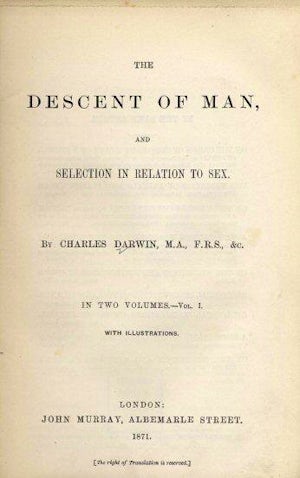
1918. Madison Grant (1865-1937, Yale law degree 1890) was a stalwart of the Nativist/Nordicist (see entry) strain of American eugenics during the progressive-era (~1900-1930). His most renowned work, The Passing of the Great Race: or the Racial Basis of European History (1916), argued for the preservation of America as a ‘civilization preserve’ for the Nordic race, advocating for immigration only from the founding stock of Anglo-Saxons and other Nordics from north-western Europe. The book was highly influential in both Nazi Germany, and North America.
Grant gained fame as a big-game sportsman and nature conservationist, leading the charge to establish several national parks and wilderness preserves (Engs, 2005, 102-103; Spiro, 2009). Grant insisted that “the Laws of Nature require the obliteration of the unfit,” and rejects the ‘alloying of races’ in the Melting Pot:
"We Americans must realize that the altruistic ideals which have controlled our social development during the past century and the maudlin sentimentalism that has made America “an asylum for the oppressed,” are sweeping the nation toward a racial abyss. If the Melting Pot is allowed to boil without control and we continue to follow our national motto and deliberately blind ourselves to “all distinctions of race, creed or color,” the type of native American of Colonial descent will become as extinct as the Athenian of the age of Pericles, and the Viking of the days of Rollo." (p. 263)
The 1918 revised and amplified edition of Passing, contains original and updated prefaces by Grant’s life-long collaborator and friend, Henry Fairfield Osborn (the ‘Dean’ of American Anthropology, and president of the American Museum of Natural History in New York), who gives the book his highest praise. Indeed, there are portions of Passing that are verbatim transcriptions of Osborn’s summaries and main points from his Men of the Old Stone Age (1915). Passing went through four editions and thirteen printings by 1936. It was translated into German, and became a sort of template for German race-hygiene texts, such as Hans F.K. Gunther’s Rassenkunde Europas (1926) – translated into English by G.C. Wheeler in 1927 as The Racial Elements of European History (London: Methuen). Gunther was a more prolific author than Osborn and Grant combined, but credits both in this seminal text. (Engs, 2005, 103-104).
Grant attracted the notice of Adolf Hitler while he was in Landsberg prison writing Mein Kampf. After becoming Führer, Hitler wrote to Grant; thanking him for his momentous work, stating that the book was “his Bible” (Black, 2003, 259). At the 1947 Nuremberg Trials, Grant's Passing of the Great Race was introduced into evidence by Dr. Karl Brandt, Hitler's personal physician and nominal head of the Nazi euthanasia program, in order to justify that the population policies of the Third Reich were not ideologically unique or original to Nazi Germany (Engs, 2005, 102).
The four-page bibliography lists a few genetics texts (by W.E. Castle, C.B. Davenport, and T.H. Morgan), and many historical works dating back to Plato. However, Passing is dominated by Continental anthropology or archeology sources, as well as the social-Darwinism of de Gobineau, Herbert Spencer, and Galton. Osborn’s original preface (1916) is a sketch or microcosm of the whole book, and in many ways, a microcosm of the eugenics movement at its progressive-era height:
"European history has been written in terms of nationality and language, but never before in terms of race; yet race has played a far larger part than either language or nationality in moulding the destinies of men; race implies heredity, which implies all the moral, social and intellectual characteristics and traits that are the springs of politics and government.
Quite independently and unconsciously the author, never before a historian, has turned this historical sketch into the current of a great biological movement, which may be traced back to the teachings of Galton and Weismann… This movement has compelled us to recognize the superior force and stability of heredity, as being more enduring and potent than environment. This movement is also a reaction from the teaching of Hippolyte Taine among historians and of Herbert Spencer among biologists, because it proves that environment, and in the case of man education, have an immediate, apparent and temporary influence, while heredity has a deep, subtle and permanent influence on the actions of men." (p. vii)
The anthropological and archeological histories outlined are essentially a summary of H.F. Osborn’s Men of the Old Stone Age, interspersed with eugenic quips and assertions. For instance in the chapter on Eolithic man, outlining the origins of humanity (Osborn’s Java Man in Asia), we find excerpts like this, arguing against the effectiveness of natural ‘competitive exclusion’ in civilized societies and advocating for enforcing the birthright of Nordic dominance in America:
"The progress of civilization becomes evident only when immense periods are studied and compared, but the lesson is always the same, namely, that race is everything. Without race there can be nothing except the slave wearing his master’s clothes, stealing his master’s proud name, adopting his master’s tongue and living in the crumbling ruins of his master’s palace. Everywhere on the sites of ancient civilizations the Turk, the Kurd and the Bedouin camp; and Americans may well pause and consider the fate of this country which they, and they alone, founded and nourished with their blood. The immigrant ditch diggers and the railroad navies were to our fathers what their slaves were to the Roman and the same transfer of political power from master to servant is taking place today." (p. 100)
Like Osborn and the Nordicist anthropology school, Grant places a great deal of scientific emphasis on cranial capacity and shape, like their predecessor Samuel G. Morton in the previous century. Such measures were used as ‘genetic markers’ of fitness or racial quality, and unlike eye or hair colour, were seen to be more enduring and of greater diagnostic value. This sort of racial anthropology would be hailed in Nazi Germany as a reliable manner to determine the racial purity and biological worth of people. These techniques were taught to SS medical and racial-office personnel, including Dr. Josef Mengele, by German academics in universities and the elite Kaiser Wilhelm Institutes (Weindling, 1989).
The focus, as the contents pages indicate, is on the migrations, racial qualities and characteristics during the Neolithic, Bronze and Iron Ages of the three main races of European history: the Alpine, Mediterranean and Nordic races. Primary attention is on the origin, expansions and contractions of the ‘great race’ in Europe, and their eventual conquest of the Americas. This was to be greatly expanded and amplified in Grant’s Conquest of a Continent (1933), and other lesser works in-between. Grant largely mirrors de Gobineau’s theories of racial inequality and rankings, but adds his own interpretations and emphases. Grant makes finer distinctions of these groups, especially the Nordics, who are divided into more than half-a-dozen racial sub-groups, with the ‘Scotch of Viking ancestry’ ranking near the top, representing Grant’s own heritage (Grant, 1918, 167-178, 179-225).
Passing details the central role of the Nordic influences on the great civilizations of Europe, especially Classical Greece and Republican Rome. It was Nordic migrants that put the luster on Greek art, culture, democracy and philosophy, as well as their conquest of the surrounding regions, populated by lesser races. It was race-mixing and gradual absorption by the ‘lower races’ that explains the eventual decline and fall of these classic civilizations. In short, the heights of European history were due to infused Nordic blood, while decline, decay and decadence are explained by the corrupting influence and fecundity of Slavic Alpines (such as Attila the Hun), hordes of Mongoloid invaders (Mongols, Tatars, etc.) and the dark-skinned Mediterraneans of southern Europe.
One can also clearly discern the influence of Galton’s theories on men of genius and eminence throughout history, although Grant lacks Galton’s adherence to statistical detail and biometric minutiae. This may help explain Grant’s popularity and influence not only on American eugenics but also on Hitler’s racial Weltanschauung and Nazi race-hygiene. An instance of the influence of Galton’s Hereditary Genius (1883) can be gleaned in this passage, from the chapter on Eolithic man:
"This genius producing type is slow breeding and there is real danger of its loss to mankind. Some idea of the value of these small strains can be gained from the recent statistics [by David Starr Jordan] which demonstrate that Massachusetts produces more than fifty times as much genius per hundred thousand whites as does Georgia, Alabama or Mississippi, although apparently the race, religion and environment, other than climatic conditions, are much the same, except for the numbing presence in the South of a large Negro population." (p. 99)
These recurring racial themes came to dominate the American eugenics movement in the 1920s, echoed by sympathetic educators, scientists, and politicians. The ‘native’ middle and upper-class American public flocked to eugenics displays and lectures, or read popular articles and books – and these themes became a fundamental part of political debates and legislation.
-Michael Kohlman
Engs, R. (2005). The eugenics movement: An encyclopedia. Westport, CT: Greenwood Press.
Grant, M. (1916). The passing of the great race. New York: Charles Scribner’s Sons.
Grant, M. (1933). The conquest of a continent: the expansion of races in America. New York: Charles Scribner’s Sons.
Osborn, H.F. (1915). Men of the Old Stone Age. New York: Charles Scribner and Sons.
Spiro, J.P. (2009). Defending the master race: Conservation, eugenics, and the legacy of Madison Grant. Burlington, Vermont: University of Vermont Press.
Weindling, P. (1989). Health, race and German politics between national unification and Nazism, 1870-1945. Cambridge: Cambridge University Press.
 1869:
Galton publishes Hereditary Genius
1869:
Galton publishes Hereditary Genius
 1871:
Charles Darwin publishes The Descent of Man
1871:
Charles Darwin publishes The Descent of Man